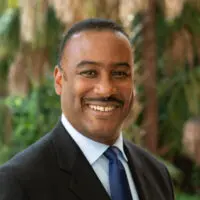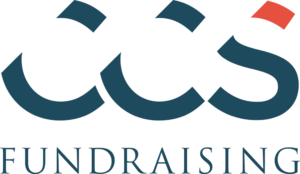One gift is powerful. Many over time? Transformational. That’s why long-term success comes from understanding each donor’s lifetime potential.
In this on-demand video, you’ll learn how cutting-edge predictive analytics and Donor Lifetime Value (DLV) strategies can help your organization build stronger donor relationships and increase fundraising efficiency — even amid shifting budgets and staffing challenges.
You will discover:
- Why Donor Lifetime Value is a critical metric for nonprofits
- How AI tools can help you segment and prioritize donors
- Practical ways to improve retention and revenue
- Real examples of how leading organizations are applying these strategies
Play the on-demand video above to rethink how your organization engages donors and discover how to unlock the full potential of your champions.
Frequently Asked Questions (FAQs)
Predictive Modeling, Machine Learning & Data
How is predictive modeling implemented with value if only 1% of donors generate most giving?
We know that most organizations generate significant revenue from their top 1% donors but lose about half of these donors over the following six years, so there is a need to find the next set of top donors. Predictive modeling helps identify new major gift prospects from your own database to help keep the pipeline full.
How does predictive modeling differ from RFM?
RFM is an approach for ranking an organization’s donor database, basing the ranking on how much was given combined with the recency of the last gift and the frequency of total gifts. It looks at what has happened historically. Predictive modeling estimates what you might expect to happen in the future. It used your own donor data to build a “statistical characterization” of your good donors and applies that characterization to the full set of donors to find people who look like your good donors, but are not good donors yet.
What machine learning or third-party segmentation tools (e.g., Prizm) are most effective for donor profiling and engagement?
Most machine learning models are built using R or Python, which are programming tools that are used by almost all statisticians and data scientists. Other tools include SAS, SPSS and Minitab. Prizm, and other similar segmentation tools are products are used for creating Personas for which custom messaging can be created.
How much data (donor counts, transactions, etc.) is needed for nonprofits of different sizes to make predictive modeling actionable?
Predictive models work best for files that have a significant number of records and a broad set of fields. We like to see at least 7,500 constituent records. The models should start from the constituent records, with the transaction data joined into the constituent file, aggregated by constituent ID.
Donor Lifetime Value (DLV) & Acquisition
What is an effective approach to building DLV? What key questions should guide how we calculate it?
Calculating donor lifetime value (DLV) usually starts with basic transactional information such as how many gifts a donor makes, how often they give, and the size of those gifts. To get deeper insights, it is also helpful to look at how different types of engagement, such as attending events or becoming a member, affect giving over time.
There are some open-source tools, such as “But Till You Die” (BTYD) models, that can provide a starting point for calculating DLV. But for more advanced methods (for example, combining predictive models and machine learning), it is best to work with experienced partners who specialize in applying these approaches for nonprofits. When calculating DLV, some key questions to ask include:
- How often do donors typically give?
- What is the average size of their gifts?
- How long do donors usually stay engaged with our organization?
Do certain types of engagement, like event attendance or memberships, lead to higher giving over time?
How should we balance revenue between retention, acquisition, and upgrades when thinking about long-term DLV?
Balancing revenue between retention, acquisition, and upgrades is one of the hardest questions fundraisers face. DLV gives you the lens to answer it.
- Retention: Keeping existing donors engaged consistently yields the highest return. Even modest givers, when retained over many years, often surpass the value of one-time larger gifts.
- Upgrades: Moving a mid-level donor to a major donor (or inspiring a planned gift) can dramatically change their DLV. Predictive insights help identify who is truly “upgrade ready,” allowing your team to focus its energy where it matters most.
- Acquisition: You need new donors to fuel the pipeline, but not all acquisitions are equal. DLV helps you identify which first-time donors are likely to become long-term loyalists versus those unlikely to give again, so you can spend acquisition dollars wisely.
In short, DLV reframes the balance, helping allocate resources where the lifetime value potential is greatest.
Should planned giving (e.g., wills, retirement assets) be factored into DLV, and how does that change the picture?
Planned giving should absolutely be factored into DLV. DLV is about seeing the whole picture of a donor’s potential over their relationship with your organization. If someone has included you in their will or designated retirement assets, that planned gift meaningfully changes their lifetime value.
Application Across Nonprofits
Do these donor stats and metrics apply equally to colleges with fixed alumni bases versus nonprofits with open prospect pools (e.g., Doctors Without Borders)?
Metrics such as acquisition will be different across sectors. Higher ed will be pulling most of their new donors from their alumni base. An organization like Doctors Without Borders would need to reach outside their donor base. Both organizations have similar challenges with retaining these new donors.
Should the focus be on 1% of prospects or 1% of actual donors when modeling giving?
You likely know who the top 1% donors are, so you don’t need help identifying them. The focus should be on the donors who score well on the affinity models, have meaningful gift capacity, and are not on the radar screen. These are the people that will fill your pipeline to replace the top donors who you are not retaining.
Are predictive models designed differently for various nonprofit sectors (healthcare, education, social services)?
Yes, helpful predictive models are designed to meet specific organizational goals, and the set of possible predictor variables for the models will be different across sectors and even within sectors. For example, higher ed will have a rich set of data on alums, such as class year, degree and major. Arts organizations will have data on memberships and ticket sales.
Implementation & Next Steps
What are the first, most practical steps to begin implementing DLV and predictive modeling strategies today?
Get your data in shape.
Start by cleaning and consolidating donor records. Predictive models rely on good data. Even simple steps such as removing duplicates or standardizing gift history can deliver value.
Segment and test.
Pick a few donor groups: mid-level givers, lapsed donors, or planned giving prospects, and ask: What does their giving say about future potential? A basic pilot, even in Excel, can uncover clear trends.
Choose one predictive goal.
Focus on a high-impact use case: re-engaging at-risk donors or spotting those ready to upgrade. Run a model (in-house or with a partner). The goal is to learn, apply, and improve.
PRESENTED BY

Ashutosh R. Nandeshwar
Executive Vice President, Data Science & Analytics

More Insights
How to Strengthen Your Donor Portfolio With Data Analytics
Learn how to effectively analyze, refine, and refresh your donor portfolio to secure long-term fundraising success.
How to Analyze CRM Data: The Hidden Power of Your Database
Unlock the potential of your organization’s CRM and data management techniques to secure long-term fundraising success.







































